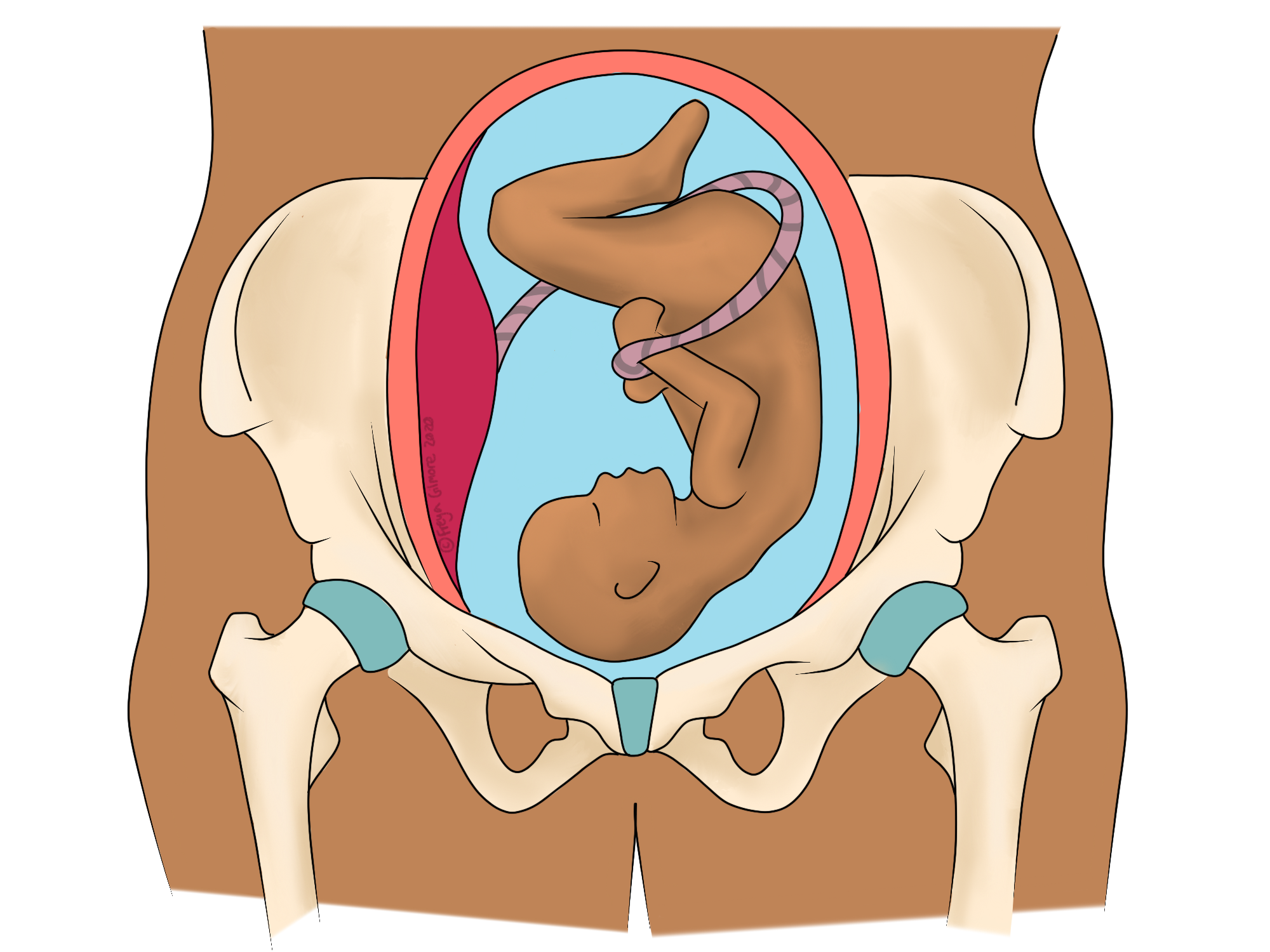The term “pelvic pain” often refers to visceral pain, like that from endometriosis. “Pelvic girdle pain” is a term specifically referring to the joints of the pelvis. During pregnancy, pelvic joint pain is prevalent, affecting at least half of pregnancies by the end of the third trimester.
PGP: Pelvic Girdle Pain
The pelvic girdle is made of three joints. The two at the back are the sacroiliac joints (SIJs). They connect the base of the spine (sacrum) to the main bones of the pelvis. Some people have dimples over them, and if you feel for them you may feel a bony or knotty area. These are all normal features of the joints, and not a sign that anything is wrong. The SIJ is an unusual joint in that is is made of a large, bumpy surface rather than a smooth hinge or ball. Besides pregnancy, the SIJs are mainly loadbearing and shock absorbing joints.
The third joint is the pubic symphysis. This is a much smaller joint at the front of the pelvis. It connects the two halves of the pelvis with a thick wedge-shaped piece of cartilage.
During pregnancy, the pelvis prepares for birth. As the baby travels through the birth canal, the sacrum needs to be able to move in response to the baby’s turns and descent. As the sacrum is held steady by the strong SIJs, the ligaments around the pelvis begin to relax from very early on in pregnancy. Although this is good news for birth, it can cause pain or discomfort throughout pregnancy. The growing bump causes the centre of gravity to shift forwards, demanding more of the back. Combined with the new ligamentous laxity, it’s easy to see how discomfort arises.
SPD: Symphysis Pubis Dysfunction
The pubic symphysis mentioned above can become particularly painful during pregnancy. More severe cases can result in the use of crutches until the baby is born, and limitations on birthing positions.
SPD is a relatively common condition in which the pubic symphysis becomes too lax. This causes instability, leading to secondary problems in the rest of the pelvis and local muscles. Although we cannot change the laxity of the ligaments, we can help to manage the body’s reaction. When a joint becomes unstable, the muscles that act upon it work harder to help support it. During the period of instability, the muscles essentially take on the role of the lax joints, so by improving the function of these muscles, we may be able to help with your symptoms.
Managing pelvic joint pain
Your osteopath will look for areas that could do more to ease the load on the pelvis. This might mean working on the upper back, for example, to improve overall movement and adaptability. We will also work to relieve symptoms by easing off tight muscles where appropriate. A longer term solution may be to consider strengthening the muscles that support the pelvis- we can devise an exercise plan with you if this is suitable.
Often, pelvic joint pain will resolve at birth. However, this is not always the case, and problems with the pelvic joints can have an impact on birth itself. If you are struggling with back pain in pregnancy, come and see us to find out what can be done for you.
Click here to make an appointment in Naas for your pelvic joint pain.





